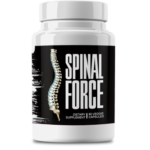This Village-Made Chinese Pain Reliever Eliminates Back And Joint Pain!
Relief for Shoulder Pain: What Works According to Science

Getting to the Bottom of Shoulder Pain: Causes and Symptoms
Shoulder pain is one of those pesky issues that can really throw a wrench into your daily routine, from how you go about your day to how well you sleep at night. Figuring out what's causing that nagging discomfort is the first step toward finding some real relief. Let's explore the usual suspects when it comes to shoulder pain, the tell-tale symptoms, and how it affects your day-to-day life.
What's Causing That Shoulder Pain?
There are quite a few reasons your shoulder might be acting up. Often, the culprits are rotator cuff injuries like tendinitis or tears. But don't rule out arthritis, bursitis, or just plain overuse. Experts in orthopedics point out that repetitive motions, especially in athletes and folks with manual jobs, are big contributors.
Spotting Symptoms: When to Get Help
Recognizing symptoms early can make a world of difference in getting the relief you need. These can range from a dull ache to sharp pain, limited movement, or even swelling and bruising. If that pain sticks around or you find it tough to move your shoulder, it’s time to check in with a healthcare professional.
How Shoulder Pain Messes with Your Life
Shoulder pain isn't just about the ache; it’s how it gets in the way. It can make simple tasks like getting dressed, driving, or cooking a real challenge. Chronic pain can mess with your sleep and even your headspace, leading to anxiety or depression. That's why finding relief is key to keeping your quality of life up.
Tackling Shoulder Pain: Medical Treatments
When it comes to shoulder pain, medical treatments often come to the rescue, offering much-needed relief. From pills to injections, these options can be crucial in managing the symptoms effectively.
Over-the-Counter Meds: What to Try
Common pain relievers like ibuprofen and acetaminophen are popular for their anti-inflammatory benefits. They can help ease the pain and swelling, making them a go-to for shoulder discomfort.
Prescription Options for Serious Pain
If over-the-counter meds aren’t cutting it, prescriptions might be your answer. These could include oral corticosteroids or stronger non-steroidal anti-inflammatory drugs (NSAIDs). Always have a chat with a healthcare professional to find the best fit for your situation.
How Corticosteroid Injections Can Help
Corticosteroid injections can be a game-changer for shoulder pain, especially when dealing with severe inflammation. Administered by healthcare professionals, these shots can offer relief for several months.
Physical Therapy: A Natural Way to Ease Shoulder Pain
Physical therapy is a cornerstone of naturally easing shoulder pain. It focuses on strengthening and stabilizing the shoulder joint with targeted exercises.
Why Physical Therapy Works for Shoulder Pain
Physical therapy not only helps with pain but also boosts mobility and function. It can help prevent future injuries by beefing up the muscles around the shoulder and increasing flexibility.
Therapist-Recommended Exercises
Therapists often suggest exercises like pendulum swings, arm circles, and resistance band exercises. These moves are great for bringing strength and flexibility back to the shoulder.
Finding the Right Physical Therapist
Choosing a qualified physical therapist is crucial for effective treatment. Look for someone with experience in shoulder conditions. Recommendations from healthcare providers or patient reviews can guide your decision.
Exploring Alternative Therapies for Shoulder Pain
Alongside conventional treatments, alternative therapies can offer extra relief. These methods can complement traditional approaches and enhance overall treatment effectiveness.
Acupuncture: A Different Approach
Acupuncture, rooted in traditional Chinese medicine, involves inserting fine needles at specific body points. Studies suggest it can help ease shoulder pain by stimulating nerves and muscles.
Chiropractic Care: The Scientific Angle
Chiropractic adjustments aim to improve joint alignment and function. Some research highlights its effectiveness in managing shoulder pain, particularly when linked to spinal issues.
Massage Therapy: A Soothing Option
Massage therapy can ease muscle tension and boost circulation, offering shoulder pain relief. It’s a calming option that can amplify the effects of other treatments.
Making Lifestyle Changes for Shoulder Pain Relief
Incorporating lifestyle tweaks can greatly aid long-term shoulder pain relief. Even small adjustments can lead to significant improvements in shoulder health.
Posture: A Key Player in Shoulder Health
Good posture is vital for preventing and easing shoulder pain. Keeping an upright position reduces the strain on your shoulder muscles and ligaments.
Ergonomic Tweaks for Shoulder Relief
Ergonomic enhancements, like adjusting chair height and desk position, can ease shoulder stress, especially for those glued to a desk job.
Exercise and Stretching: Keeping Shoulders in Shape
Incorporating regular exercise and stretches into your routine can stave off stiffness and maintain shoulder mobility. Activities like yoga and swimming are fantastic for shoulder health.
Home Remedies and Self-Care for Shoulder Pain
Simple home remedies can offer quick relief for shoulder pain and complement other treatments. These easy-to-implement methods effectively manage pain.
Heat vs. Cold: What Works?
Alternating between heat and cold therapy can reduce inflammation and ease pain. Heat relaxes muscles, while cold therapy cuts down swelling and numbs sharp pain.
Easy At-Home Exercises and Stretches
Exercises like wall push-ups and shoulder raises can maintain strength and flexibility. Regular stretching prevents stiffness and enhances range of motion.
Rest and Recovery: Essential for Healing
Rest is crucial in the healing journey. Avoid activities that exacerbate pain and allow time for recovery to prevent further injury.
Preventing Shoulder Pain: Long-Term Strategies
Preventive measures are key in maintaining shoulder health and keeping pain at bay. Adopting these strategies can help protect your shoulders for the long run.
Strengthening Exercises: A Preventive Measure
Strengthening exercises, like resistance training, can fortify shoulder muscles, offering better support and reducing injury risk.
Nutrition: Fueling Joint Health
A balanced diet rich in omega-3 fatty acids, vitamin D, and calcium supports joint health and reduces inflammation.
Spotting Early Signs and Acting Fast
Keeping an eye out for early signs of shoulder pain and acting promptly can prevent more serious issues. Early intervention is crucial for effective pain management.
Wrapping Up
Shoulder pain can be a real hurdle, but understanding its causes and exploring various relief methods can significantly enhance your quality of life. Whether through medical treatments, physical therapy, or lifestyle changes, there are numerous ways to find relief.
Key Points to Remember
- Identify the cause and symptoms early to seek appropriate treatment.
- Consider combining medical and alternative therapies for comprehensive relief.
- Make lifestyle changes to support long-term shoulder health.
Final Thoughts
By taking proactive steps and exploring a variety of treatment options, you can find effective relief for shoulder pain and regain control over your daily activities. Have any questions or stories to share? Drop a comment below. Let's support each other on the path to pain-free living!








